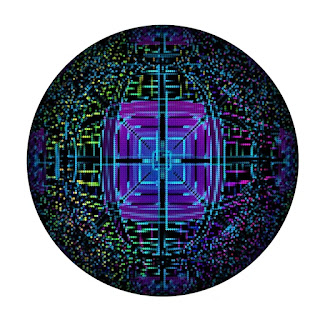Quantum entanglement is a fascinating concept in quantum physics, where two or more particles become linked in such a way that the state of one particle directly influences the state of another, even if they are far apart. This phenomenon was famously described by Albert Einstein as "spooky action at a distance."
How Does Quantum Entanglement Work?
When two particles, such as photons, electrons, or atoms, interact and become entangled, their quantum states become interdependent. For example, if two photons are entangled and you measure one’s polarization or spin, you instantly know the state of the other, no matter how far apart they are. This is because their states are correlated.
Key Characteristics of Quantum Entanglement
1. Independence from Distance: One of the most intriguing features of quantum entanglement is that it operates independently of distance. Even if the particles are light-years apart, the measurement of one will immediately determine the state of the other.
2. Instantaneous Effect: When the state of one particle is changed, the state of the other particle changes instantaneously. This might seem to suggest faster-than-light communication, but it doesn’t allow for faster-than-light transmission of information because the change in state is not transmitted in a conventional way.
Applications of Quantum Entanglement
1. Quantum Computing: Quantum computers can solve certain problems much faster than classical computers. Quantum bits, or qubits, can exist in multiple states simultaneously, thanks to entanglement. This ability to perform multiple calculations at once dramatically speeds up computing.
2. Quantum Cryptography: Entanglement can be used to create secure communication systems. In quantum cryptography, any attempt by a third party to intercept the communication will disturb the entangled state, making it detectable.
3. Quantum Communication: Entangled particles can enable secure long-distance communication. Quantum networks based on entanglement could potentially provide an unbreakable communication system.
Experimental Results
1. Bell's Theorem: In 1964, physicist John Bell proposed an experiment (Bell's Theorem) to test whether quantum mechanics or classical physics could better explain the behavior of entangled particles. His experiments showed that quantum mechanics was correct, and classical theories were insufficient.
2. Paradoxes: The phenomenon of quantum entanglement challenges our classical understanding of reality. It appears to violate the principles of local realism, leading to debates about the true nature of reality itself.
Conclusion
Quantum entanglement is a fundamental and mysterious aspect of quantum physics. It’s not only a theoretical concept but also has real-world applications in quantum computing, cryptography, and communication. Despite its counterintuitive nature, it has been confirmed through many experiments and continues to be a topic of deep study and exploration in modern physics.









